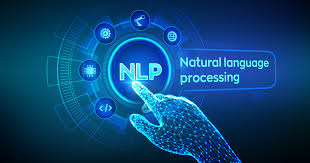Description
Introduction
Text mining and preprocessing are foundational tasks in the Natural Language Processing (NLP) pipeline. The process involves extracting valuable insights from unstructured text data, cleaning it, and preparing it for analysis. Effective text mining techniques and preprocessing strategies are critical to the success of NLP projects, as they directly impact the quality of the models and the accuracy of the results. This course will guide you through the essential methods and tools used for text mining and preprocessing, focusing on real-world applications and challenges in NLP.
Prerequisites
- Basic knowledge of Python programming.
- Familiarity with NLP concepts such as tokens, stems, and lemmatization.
- Understanding of machine learning principles, especially in the context of text data.
- Basic experience with Python libraries like NLTK, SpaCy, or pandas is beneficial but not mandatory.
Table of Contents
- Introduction to Text Mining and Preprocessing
1.1 What is Text Mining?
1.2 The Role of Preprocessing in NLP
1.3 Overview of the Text Mining Process
1.4 Applications of Text Mining in Various Industries (e.g., healthcare, finance, social media) - Understanding Text Data
2.1 Unstructured vs Structured Data
2.2 Types of Textual Data (Tweets, Articles, Product Reviews, etc.)
2.3 Challenges in Text Data Analysis: Noise, Ambiguity, and Variability
2.4 Basic Terminology in Text Mining (Tokens, Corpus, Stop Words, etc.) - Text Preprocessing Fundamentals
3.1 The Importance of Preprocessing for NLP Models
3.2 Text Cleaning: Removing Special Characters, Punctuation, and Noise
3.3 Tokenization: Breaking Text into Words and Sentences
3.4 Lowercasing and Normalization
3.5 Stop Words Removal and its Impact on Text Analysis - Advanced Text Preprocessing Techniques
4.1 Lemmatization vs Stemming: Definitions and Use Cases
4.2 Handling Abbreviations, Misspellings, and Slang
4.3 Dealing with Multilingual Text Data
4.4 Handling Emojis, Hashtags, and Mentions in Social Media Data - Text Representation Techniques
5.1 Bag of Words Model (BoW) and its Limitations
5.2 Term Frequency-Inverse Document Frequency (TF-IDF)
5.3 Word Embeddings: Word2Vec, GloVe, and FastText
5.4 Sentence Embeddings and Document Representation Techniques
5.5 Pretrained Language Models: BERT, GPT, and their Usage in NLP - Feature Extraction and Engineering
6.1 Identifying Features for Text Classification and Clustering
6.2 N-grams and Their Applications
6.3 TF-IDF vs Word Embeddings for Feature Representation
6.4 Handling Imbalanced Data in Text Mining Tasks(Ref: Sentiment Analysis with NLP: Understanding Customer Insights)
6.5 Feature Selection and Dimensionality Reduction for Text Data - Text Mining Techniques for Analysis
7.1 Text Classification: Assigning Labels to Text Data
7.2 Text Clustering: Grouping Similar Texts
7.3 Named Entity Recognition (NER) and Its Role in Text Mining
7.4 Topic Modeling: Extracting Hidden Themes in Text
7.5 Sentiment Analysis: Extracting Opinions from Text - Tools and Libraries for Text Mining
8.1 Overview of Popular Text Mining Libraries (NLTK, SpaCy, Gensim, etc.)
8.2 Working with Pandas for Text Data Manipulation
8.3 TextBlob for Sentiment Analysis and Simplified NLP
8.4 Using Scikit-learn for Text Classification and Feature Extraction
8.5 Hugging Face’s Transformers for Pretrained Language Models - Scaling Text Mining for Big Data
9.1 Text Mining on Large Datasets: Challenges and Solutions
9.2 Distributed Text Mining with Apache Hadoop and Spark
9.3 Using Cloud Platforms (AWS, Azure, Google Cloud) for Text Mining Tasks
9.4 Real-time Text Mining and Processing - Real-World Applications of Text Mining
10.1 Text Mining in Customer Feedback Analysis
10.2 Social Media Sentiment Analysis
10.3 Medical Text Mining for Healthcare Insights
10.4 Legal Text Mining for Document Review and Case Prediction
10.5 Text Mining in News Aggregation and Content Curation - Evaluating Text Mining Models
11.1 Performance Metrics for Text Classification (Accuracy, Precision, Recall, F1-Score)
11.2 Evaluating Clustering and Topic Modeling Models
11.3 Error Analysis and Improving Preprocessing Pipelines
11.4 Cross-validation and Hyperparameter Tuning for Text Mining Models - Ethical Considerations in Text Mining
12.1 Privacy Concerns and Data Anonymization
12.2 Bias and Fairness in Text Mining Models
12.3 Dealing with Sensitive Text Data (e.g., Hate Speech, Misinformation)
12.4 Ensuring Transparency and Accountability in Text Mining Systems
Conclusion
Text mining and preprocessing are integral parts of the NLP workflow, enabling organizations to extract meaningful insights from vast amounts of unstructured text data. This course has covered the essential preprocessing techniques and text mining methods, from tokenization and cleaning to advanced machine learning applications like classification, clustering, and sentiment analysis. By mastering these foundational techniques, learners can improve the quality of their NLP models and make data-driven decisions in real-world projects. With the growing importance of text data, the skills acquired here are essential for any data scientist or NLP practitioner.







Reviews
There are no reviews yet.